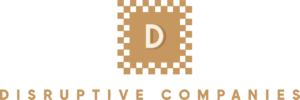
In today’s fast-paced world, success often hinges on how well we manage and optimize the resources at our disposal. Whether you’re an individual striving for personal growth or a business aiming for profitability, resource optimization is the key to achieving your goals. But what exactly is resource optimization, and how can you harness its power? In this blog post, we’ll explore the art and science of optimizing resources for success.
Section 1: Understanding Resource Optimization
Resource optimization is the strategic management of available resources to achieve the highest possible efficiency and productivity. Resources can include financial assets, human capital, time, technology, and more. The process involves allocating these resources in a way that maximizes their utility toward your goals.
One of the primary reasons resource optimization is crucial is because it helps you make the most of what you have. In a world where time is money and resources are limited, efficient resource management can be the difference between success and stagnation.
Section 2: Identifying Your Resources
Before you can optimize your resources, you must first identify what you have. Resources can be categorized into various types, such as:
- Financial resources: Money, investments, and assets.
- Human resources: Skills, knowledge, and talent within your team.
- Time: Your most precious and finite resource.
- Technology: Tools, software, and equipment.
- Networking: Professional connections and relationships.
Take some time to create an inventory of your available resources. Often, we possess more resources than we realize. This step is crucial in understanding where to focus your efforts.
Section 3: Setting Clear Objectives
Resource optimization is most effective when it aligns with specific goals and objectives. The SMART goal framework (Specific, Measurable, Achievable, Relevant, Time-bound) is a valuable tool for setting clear objectives. When your objectives are well-defined, you can better allocate your resources to achieve them.
For instance, if your goal is to increase revenue by 20% in the next quarter, you can allocate financial resources to marketing, human resources to sales training, and time resources to customer relationship management.
Section 4: Prioritizing Resources
Not all resources are created equal, and not all tasks or projects require the same allocation of resources. Resource prioritization involves determining which resources should be allocated to specific activities based on their importance and potential impact.
Consider the 80/20 rule (Pareto Principle), which suggests that 80% of results come from 20% of efforts. Identify the vital few resources and tasks that will yield the most significant results, and prioritize them accordingly.
Section 5: Leveraging Technology and Tools
In the digital age, technology can be a powerful ally in resource optimization. There are numerous software applications and tools designed to streamline resource management processes. For instance:
- Project management software helps allocate and track resources for specific tasks.
- Accounting software simplifies financial resource management.
- Time tracking apps aid in optimizing your most valuable resource: time.
Evaluate which technology and tools are best suited to your needs and integrate them into your resource optimization strategy.
Section 6: Monitoring and Measuring Progress
Resource optimization is an ongoing process. Regularly monitor and measure your progress to ensure you’re on track to meet your objectives. Key performance indicators (KPIs) can help assess resource utilization and goal attainment.
Adjust your resource allocation based on performance data. If a particular strategy isn’t yielding the expected results, be willing to reallocate resources to more promising avenues.
Section 7: Case Studies and Success Stories
To illustrate the power of resource optimization, let’s delve into a few real-life success stories:
Case Study 1: Company X’s Remarkable Turnaround
- Company X was on the brink of bankruptcy but managed to turn the tide by strategically reallocating resources, focusing on core products, and optimizing their supply chain.
Case Study 2: Personal Development Success
- Sarah, a working professional, achieved a work-life balance by efficiently allocating her time resources. She invested in online courses to enhance her skills, leading to a promotion.
These cases highlight the tangible benefits of resource optimization.
Section 8: Overcoming Resource Optimization Challenges
While resource optimization offers great potential, it’s not without its challenges. Common obstacles include resource scarcity, resistance to change, and inadequate data analysis. To overcome these challenges:
- Seek innovative solutions to make the most of limited resources.
- Foster a culture of adaptability and continuous improvement.
- Invest in data analytics and reporting tools to make informed decisions.
Section 9: Future Trends in Resource Optimization
The landscape of resource optimization is constantly evolving. Emerging trends, such as artificial intelligence, automation, and sustainable resource management, are shaping the future. Stay informed and be prepared to adapt your resource optimization strategies to leverage these trends.
Conclusion
In conclusion, optimizing resources for success is a dynamic process that involves identifying, prioritizing, and efficiently allocating your available resources to achieve your objectives. Whether you’re an individual pursuing personal growth or a business aiming for profitability, resource optimization is the key to unlocking your full potential. Start today, and watch your goals turn into achievements through the power of resource optimization.



